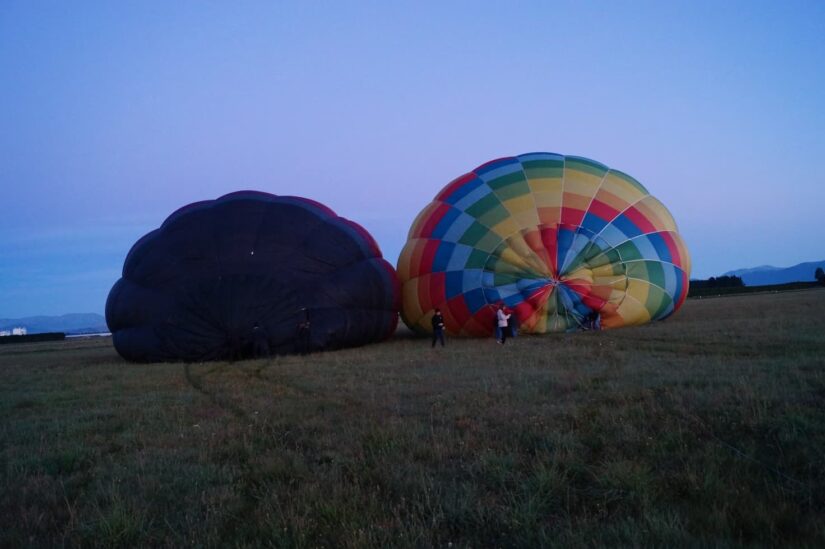How Aviation Traffic Affects Hot Air Ballooning
Hot air ballooning provides an unparalleled and peaceful way to take in the stunning views from the skies. Gliding quietly above the earth, balloon enthusiasts are treated to a sense of freedom and awe that is hard to match with other forms of flight. However, similar to other aerial activities, hot air ballooning is subject to various external influences, with aviation traffic being one of the most critical. The presence of other aircraft in the airspace can have a significant impact on the safety, flight paths, and overall experience of hot air balloon journeys. Understanding how aviation traffic impacts hot air ballooning and knowing how to track and avoid it can help ensure a safer and more enjoyable journey. One way to stay informed about aviation traffic is by using tools like flight tracking services, which you can find here.
How Aviation Traffic Affects Hot Air Balloon Routes
The skies are becoming increasingly crowded with a variety of aircraft, from commercial airliners to private planes, helicopters, and even drones. For hot air balloons, which operate at lower altitudes and move slowly compared to other aircraft, this congestion can pose significant challenges.
- Route Planning and Safety: One of the primary concerns for hot air balloon pilots is ensuring that their flight path does not intersect with the routes of faster and larger aircraft. Unlike airplanes, which can quickly change altitude or direction, hot air balloons are largely at the mercy of the wind and have limited control over their movement. This makes it crucial to plan routes that avoid busy airspace where collisions could occur. The proximity to airports and common flight paths of commercial airliners is a particularly critical factor to consider. In regions with high aviation traffic, balloon pilots must be extra vigilant and may need to adjust their launch sites or flight times to minimize risk.
- Altitude Considerations: Hot air balloons typically fly at altitudes between 1,000 and 3,000 feet, though they can ascend higher under certain conditions. This altitude range often overlaps with the lower flight levels used by smaller aircraft, such as private planes and helicopters. In areas with heavy aviation traffic, this overlap can create potential conflicts, especially if pilots are unaware of each other’s presence. For this reason, it is essential for balloon pilots to be aware of the current aviation traffic in their area and adjust their flight altitude accordingly. Flight tracking tools offer real-time data on nearby aircraft, assisting pilots in making informed decisions.

- Communication and Coordination: Effective communication between hot air balloon pilots and air traffic control (ATC) is vital in areas with dense aviation traffic. While hot air balloons typically do not have transponders that broadcast their position to ATC, pilots can still communicate their location and intentions to avoid conflicts with other aircraft. Additionally, in some regions, balloon flights are required to file a flight plan, especially if they are operating near controlled airspace. Understanding the local regulations and maintaining good communication can significantly reduce the risks associated with aviation traffic.
Using Technology to Navigate Aviation Traffic Safely
With the growing complexity of airspace, hot air balloon pilots and enthusiasts can benefit greatly from modern technology that helps monitor and navigate aviation traffic. One of the most useful tools available today is flight tracking software, which allows users to see real-time data on aircraft movements in their area. By incorporating such technology into their pre-flight planning and in-flight monitoring, balloon pilots can enhance safety and ensure a more enjoyable flight experience.
- Pre-Flight Planning: Before launching a hot air balloon, pilots can use flight tracking services to assess the current aviation traffic in their intended flight area. By examining live data, they can identify busy flight paths, determine the best launch sites, and select the safest flight times. This proactive approach helps minimize the likelihood of encountering other aircraft during the flight. Flight tracking services provide detailed information about airplanes in the sky, making them an invaluable resource for balloonists.
- In-Flight Monitoring: While in the air, balloon pilots can continue to monitor aviation traffic using mobile apps or other devices connected to flight tracking services. This real-time information allows pilots to adjust their altitude or direction if necessary to avoid conflicts with other aircraft. For example, if a small plane is detected on a collision course, the pilot can ascend or descend to a safer altitude. This level of situational awareness is crucial in preventing accidents and ensuring a smooth flight.
- Post-Flight Analysis: After landing, reviewing the flight data can provide valuable insights for future flights. Understanding the patterns of aviation traffic in certain areas can help pilots refine their route planning and improve safety protocols. By analyzing the data provided by flight tracking services, pilots can learn from each flight and continue to enhance their safety measures.
The Future of Hot Air Ballooning in a Crowded Sky
As the number of aircraft in the skies continues to increase, the challenges faced by hot air balloon pilots will only grow. However, by embracing technology and staying informed about aviation traffic, balloonists can continue to enjoy their flights while minimizing risks. The integration of flight tracking tools into the ballooning community is a step forward in ensuring that this age-old form of flight remains safe and enjoyable for everyone involved.
In conclusion, aviation traffic has a significant impact on hot air balloon flights, influencing everything from route planning to in-flight safety. By understanding these challenges and utilizing modern technology like flight tracking services, balloon pilots can navigate the skies more safely. Whether you’re a seasoned pilot or a first-time flyer, staying informed about the airspace around you is key to a successful and enjoyable hot air ballooning experience.
